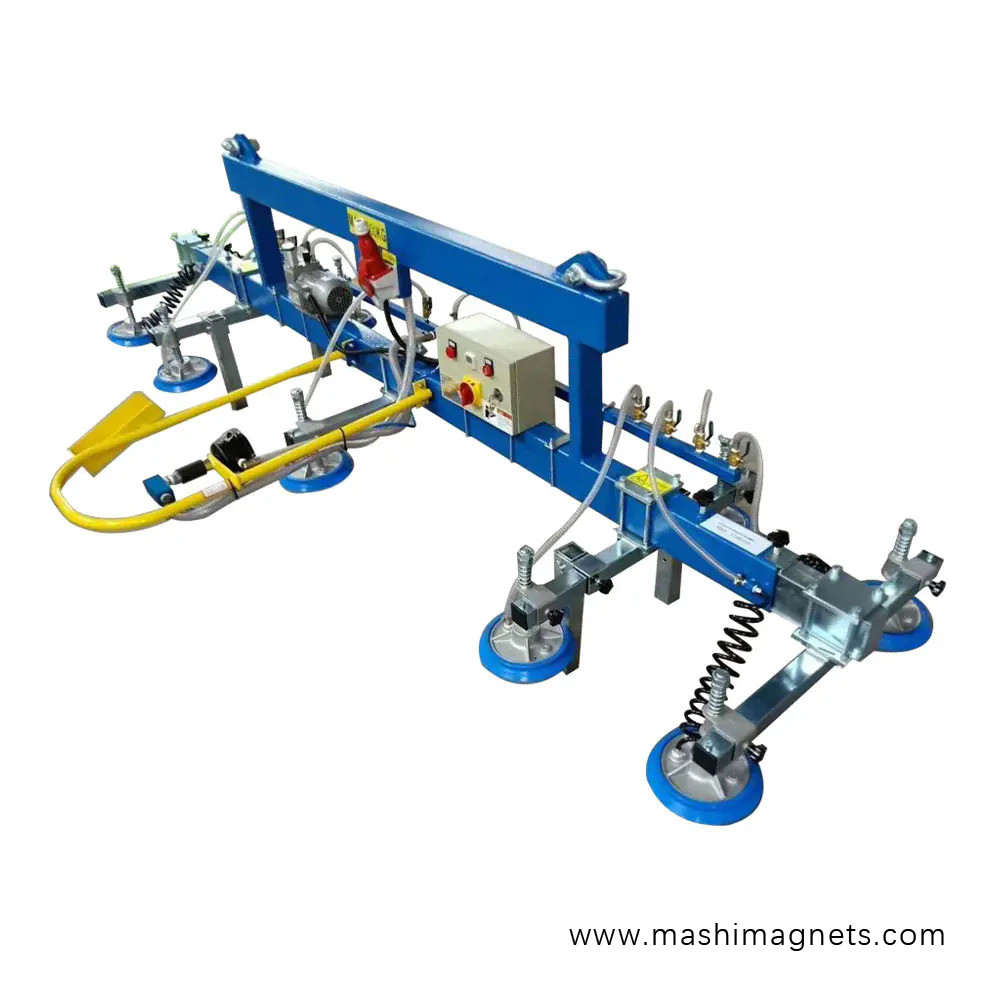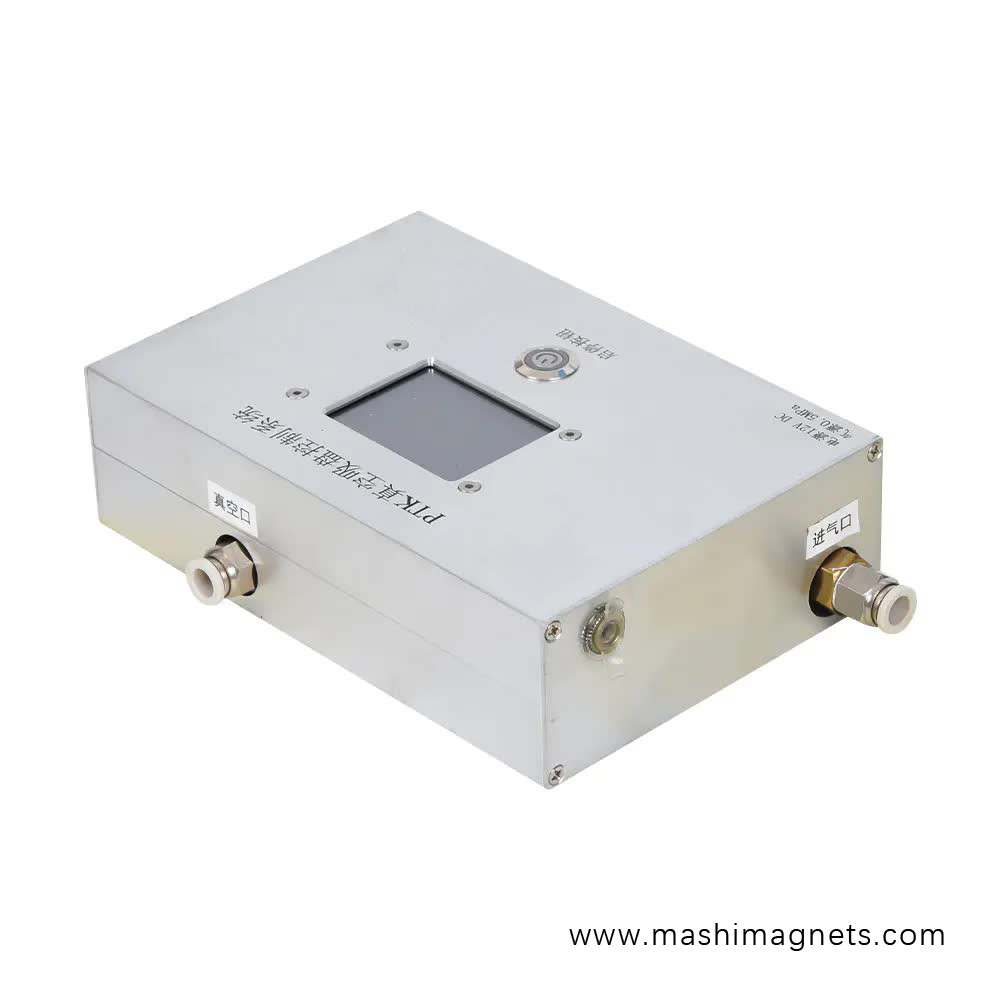

Specification models
| Model | External Dimensions (mm) | Polar Distance (mm) | Rated Voltage (DCV) | Rated Current (A) | ||
| Long | Wide | High | ||||
| XM11 250*500 | 500 | 250 | 130 | 4(1+3) | 110 | 1 |
| XM11 300x600 | 600 | 300 | 130 | 4(1+3) | 110 | 1.1 |
| XM11 300x800 | 800 | 300 | 1360 | 4(1+3) | 110 | 1.45 |
| XM11 400*800 | 800 | 400 | 130 | 4(1+3) | 110 | 1.8 |
| XM11 400*1000 | 1000 | 400 | 130 | 4(1+3) | 110 | 1.9 |
| XM11 500*1000 | 1000 | 500 | 130 | 4(1+3) | 110 | 2 |
The vacuumlifter has at least four main advantages.
1. High Operational Speed
Vacuum energy is stored in a vacuum accumulator and rapidly transferred to thechuck for instantaneous suction. Within two seconds, the vacuum in thechuck can be restored to atmospheric pressure, facilitating immediate release.
2. Secure Adhesion without Surface Damage
Vacuum lifters primarily utilize a vacuum source to evacuate air from thechuck, typically made of materials such as silicone, natural rubber, or nitrile rubber. This ensures damage-free handling of materials such as sheet metal and glass.
3. Safety in Use
The vacuum in the lifter is usually sourced from an energy accumulator. In case of a power outage, the energy reserve can support the load for several hours. Vacuum levels are under control, and sensors indicate whether there is a system leak or if the load has been released. As long as the suction cup maintains the appropriate vacuum, the load remains secure.
4. Time, Energy, and Cost Savings
The use of vacuum lifters reduces the number of personnel required in storage areas. Suction and release operations can be performed by a single operator: the overhead crane operator. Regardless, reducing the number of workers engaged in strenuous or hazardous tasks is not only possible but also necessary.
5. Convenient Operation
The vacuum lifter, operated from above, makes grasping, lowering, and releasing significantly easier. This stands as one of the key advantages when using vacuum lifters for the movement of objects.
Vacuum lifters are commonly used for:
1. Handling and loading of sheet metal, aluminum plates, steel plates, and stone slabs, including tasks such as transporting sheet metal and loading onto laser cutting machines.
2. Processing all types of glass.
3. Transporting and loading coil materials such as iron, steel, and aluminum coils.
4. Handling and loading of pipes such as steel pipes.
5. Transporting and loading of precast concrete components.
6. Suitable for handling other flat and regularly shaped materials.